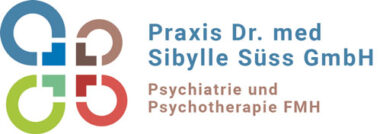
Botox for neurological diseases
Chronic migraine
Chronic migraine is a form of migraine in which sufferers experience headaches at least 15 days a month, of which at least eight days are migraine-like.
This type of migraine can severely affect daily life and lead to considerable restrictions. The exact cause of chronic migraines is not yet fully understood. It is assumed that a combination of genetic factors, environmental factors and neurological changes play a role.
Various approaches are used in the treatment of chronic migraines, including Botox.
Treatment with Botox for chronic migraines is carried out at regular intervals of around three months. Several injections are given at different points in the head and neck area.
The exact number of injections depends on the patient’s individual situation.
Tension headache
Botox can also be used to treat tension headaches. Tension headaches are the most common form of headache and are often described as pressing or pulling. They can be episodic or chronic.
The exact cause of tension headaches is not fully understood, but muscle tension in the head and neck is thought to play a role.
Botox can help to reduce this muscle tension and thus reduce the frequency and intensity of headaches.
Treatment with Botox for tension headaches involves injections into certain muscles in the head and neck area, primarily in the forehead area.
The exact number of injections and the dosage depend on the patient’s individual situation and are determined by the treating doctor.
Bruxism
Botox can also be used to treat bruxism. Bruxism is the unconscious grinding or clenching of teeth that occurs mainly at night during sleep.
It can lead to tooth damage, jaw joint pain and muscle tension. By injecting Botox into the chewing muscles, muscle activity can be reduced, resulting in muscle relaxation. This can help to reduce or even stop teeth grinding and clenching. In most cases, the headaches caused by grinding or clenching are also reduced.
Treatment with Botox for bruxism usually involves several injections into the affected masticatory muscles. The exact dosage and number of injections depends on the patient’s individual situation and is determined by the treating doctor.
It is important to note that Botox for bruxism is a temporary solution and regular top-up treatments may be required to maintain the effect. Side effects such as temporary weakness or pain at the injection site may occur.
In addition to Botox treatment, other measures can also be recommended to prevent and relieve chronic migraines, tension headaches and bruxism.
These include, for example, relaxation techniques, stress management, a healthy lifestyle and, if necessary, taking medication.
It is important to always consult a specialised doctor to get an accurate diagnosis and find the best possible treatment option.
Botox can be an effective option in some cases to reduce the frequency and intensity of headaches and bruxism and improve the quality of life of those affected.
The costs are usually covered by health insurance or supplementary insurance on application and subject to authorisation.
